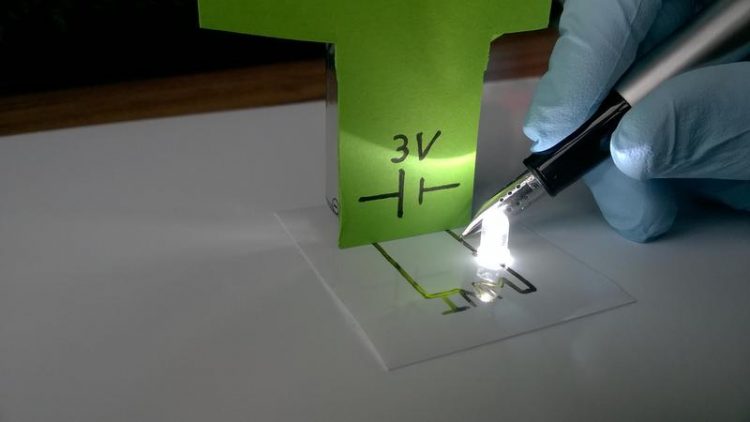HMI 2019: Conductive metal-polymer inks for inkjet printing: flexible electronics without sintering

Flexible electronics without sintering Free within this context; source: INM
The developers will demonstrate their hybrid inks at stand C54 in hall 5 at this year's Hannover Messe, which takes place from April 1 to 5.
Conductive inks are widely used in to print electronics. The inks presented by INM are applicable to flexible photovoltaics, lighting, touch screen electronics, wearable devices, large-area heaters, sensors, and 3D conformal antennas, among others.
The inks are based on gold nanoparticles with good biocompatibility and low toxicity (FDA “generally regarded as safe”), suitable for health and biomedical applications.
“Immediate conductivity upon drying, mechanical flexibility, and good biocompatibility are important properties of our ink,” explains the INM materials scientist Tobias Kraus.
“The hybrid inks contain a small organic polymer fraction that helps to maintain its electrical conductivity, even if the substrate material is bent,” Kraus continues. This enables printing on almost any substrate, like foil, paper, or textiles, since the final annealing steps at relatively high temperatures are avoided.
INM scientists have scaled the production of these hybrid inks to a level that is sufficient for small-scale production. “The scaling of nanostructured products requires optimized processes in order to maintain quality while lower prices,” says Kraus. Samples of the material are available for testing upon request.
Your expert at INM:
Prof. Dr. Tobias Kraus
Head Structure Formation
Phone: +49681-9300-389
tobias.kraus@leibniz-inm.de
Media Contact
All latest news from the category: Trade Fair News
Newest articles

Bringing bio-inspired robots to life
Nebraska researcher Eric Markvicka gets NSF CAREER Award to pursue manufacture of novel materials for soft robotics and stretchable electronics. Engineers are increasingly eager to develop robots that mimic the…

Bella moths use poison to attract mates
Scientists are closer to finding out how. Pyrrolizidine alkaloids are as bitter and toxic as they are hard to pronounce. They’re produced by several different types of plants and are…

AI tool creates ‘synthetic’ images of cells
…for enhanced microscopy analysis. Observing individual cells through microscopes can reveal a range of important cell biological phenomena that frequently play a role in human diseases, but the process of…





















